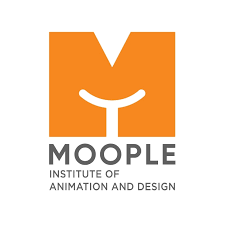If you are interested in pursuing a creative and fulfilling career that involves art, technology, and communication, then graphic designing might be the right path for you. As a graphic designer, you will have the opportunity to create visual solutions for various media platforms.
In this blog post, we will take you through step-by-step instructions on how to kickstart your journey towards becoming a successful graphic designer- from selecting appropriate graphic designing courses in Kolkata to securing meaningful employment opportunities.
Choose a Graphic Designing Course
Before undertaking a career as a graphic designer, finding a course and graphic design art institute in Kolkata that aligns with your interests, goals, and budget is essential. In Kolkata, there are several options available with varying levels of education, duration, and curriculum. Here are some popular graphic designing courses in Kolkata:
- Diploma in Graphic Design: This one-year course provides a comprehensive introduction to graphic design, covering essential topics like typography, color theory, layout design, illustration techniques, and software proficiency. It is specifically designed for individuals with little to no prior experience in graphic design who are eager to learn the fundamental principles and gain practical skills in this field.
- Bachelor of Design in Graphic Design: If you have a passion for graphic design and aspire to build a successful career in the field, this four-year course is tailor-made for you. It offers a comprehensive curriculum that covers every aspect of graphic design, from its intriguing history to the fundamental theories and principles behind it. Through engaging hands-on exercises, you’ll learn how to apply your newfound knowledge in practical ways.
- Master of Design in Graphic Design: The two-year program is designed for graduates who wish to expand their knowledge and proficiency in graphic design. It covers advanced subjects like branding, identity, user experience, and emerging trends. The course provides an opportunity for students to deepen their skills in graphic design and pursue further studies in the field.
Learn the Graphic Design Tools
Once you have taken the first step towards becoming a graphic designer, it’s crucial to familiarize yourself with the essential tools of the trade. Here are some widely-used examples of graphic design tools:
- Adobe InDesign is a versatile software application that enables you to design and publish layouts for print and digital media. It’s commonly used for creating visually appealing materials such as magazines, books, flyers, and ebooks.
- On the other hand, CorelDRAW is a powerful software application specifically designed for creating vector graphics, logos, illustrations, and page layouts. Graphic designers utilize CorelDRAW extensively for its comprehensive set of tools tailored towards graphic design, logo creation, and illustration purposes.
- Sketch is a versatile software application that enables users to easily design and prototype user interfaces, web pages, and mobile apps. It is trendy among professionals in UI/UX design and web development industries.
- Canva is an intuitive online platform that empowers users to create effortlessly and share visually appealing graphics, posters, flyers, social media posts, and other visual content.
Build Your Graphic Design Portfolio
After completing the first two steps to becoming a graphic designer, the next crucial step is to create a comprehensive graphic design portfolio. Your portfolio serves as a compilation of your finest work. To effectively build your graphic design portfolio, follow these essential steps:
- Showcase your graphic design abilities and creativity by creating a portfolio of original and diverse projects. Whether they’re personal achievements, graphics and animation courses certificates, and choose projects that align with your interests and goals.
- Select your most vital work that showcases your expertise in various tools, techniques, media types, and genres of graphic design. Present your work in an organized and visually appealing manner to showcase your professionalism and personality as a designer.
- Consider using categories, labels, captions, or presenting your work in formats like a website, PDF, or slideshow.
- Keep updating your portfolio with new and improved pieces regularly while seeking feedback from peers, mentors, or clients to enhance it continually.
Find Graphic Design Opportunities
The last step in becoming a graphic designer is finding opportunities in the field that align with your skills, interests, and goals. There are various paths you can explore within graphic design, including:
Career Opportunities:
Graphic design offers a wide range of career opportunities across various sectors, including advertising, media, education, entertainment, e-commerce, and more. If you’re looking for graphic design jobs in Kolkata, you can explore online platforms like Naukri, Indeed, or LinkedIn.
Freelancing:
Another option is working as a freelance graphic designer where you can offer your services to clients worldwide. You can find freelance graphic design projects on popular online platforms such as Upwork, Fiverr, or Freelancer. Alternatively, creating your website and portfolio or leveraging social media can also help attract potential clients.
Entrepreneurship:
If you have a passion for graphic design, you can turn it into a successful business venture. By starting your own graphic design company, you have the freedom to create your brand, develop unique products or services, and cater to your specific target audience. Utilize different marketing channels such as a portfolio, website, social media platforms, or good old-fashioned words.
Conclusion
When choosing a graphic design course, consider your educational background and career goals. Learn how to use graphic design tools for creating and editing graphics effectively. Showcase your skills and accomplishments by developing a comprehensive portfolio. Finally, explore job opportunities in the graphic design field that align with your interests, skills, and goals.

